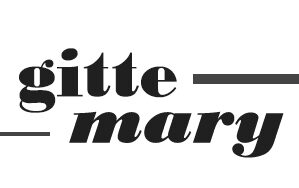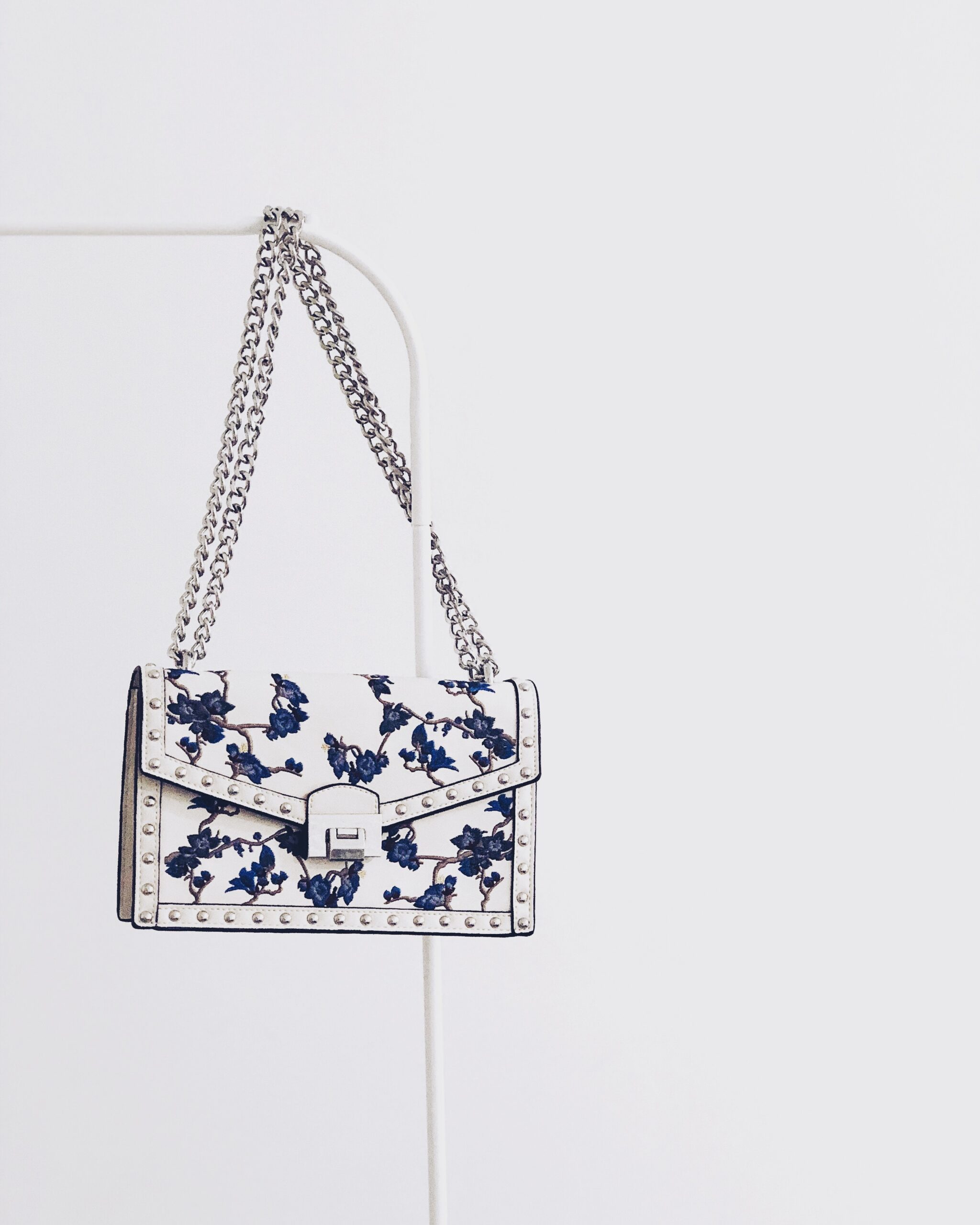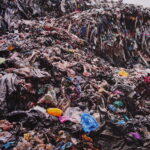Today I want to talk about the impact of designer labels – especially in contrast to fast fashion. While there are many other perspectives to talk about as well, like the impact these labels have had on beauty standards and body image, just to name some quite pressing issues, this video will look at how luxury goods perform in terms of sustainability.
Luxury goods and designer labels are often associated with a level of exclusivity, craftsmanship, high-quality materials, and uniqueness – and of course a price tag to match. In many ways, designer and luxury goods offer opposition to the fast fashion industry with their cheap materials, affordable prices, and mass production. Over 100 billion pieces of fast fashion clothes are produced every year, and these clothes are produced both unsustainably and unethically. The workers producing these clothes are paid next to nothing, work up to 19 hours a day, and are forced to work in sweatshops where the working conditions are dangerous and unsafe. The materials used by the fast fashion industry also take a huge toll on the planet, with the most commonly used textiles being polyester and conventional cotton. I have a more in-depth analysis of both the impact of cotton and the fast fashion industry if you want to dive into the details a bit more. But the bottom line is that the textile industry is among the most polluting on the planet. So the question is, do the higher price tags of designer labels equal more sustainable and ethical products?
Luxury is on the rise
Currently, luxury fashion is one of the most rapidly expanding and well-performing industries in the world, with leading firms experiencing double-digit growth in the last few years. While luxury has been a concept throughout the vast majority of human history, what constitutes luxury has changed many times over. An original comprehension of luxury, for instance, does not suggest the production of expensive objects but was more so related to a mental state that separated humans from animals. What is typically associated with luxury today has its roots in aristocracy, as well as the developments of the industrial revolution. Historically, luxury has also been a tool of religious symbolism, where the presence of expensive objects associates an institution or figure with a closeness to the divine. Why is this important? Well, I like to understand things more thoroughly before breaking them completely apart in a sec. Of course, today, as well as through much of our history, luxury is born out of economic and materialistic prosperity. So why do we buy expensive things?
Luxury brands are selling an identity, not a product
When buying designer products, you’re not necessarily paying for unique craftsmanship – don’t get me wrong, in some cases you absolutely are, but it’s not a given. Designer brands offer products of higher quality than what you can find in a fast fashion store, at least sometimes. When it comes to products like designer shoes and bags there is a general acknowledgement of their high quality. However, designer labels also carry collections of plain white t-shirts or black socks, which are most likely made from the exact same material as the cheaper fast fashion counterpart. When you’re paying 500 dollars for a t-shirt with a logo on it, you’re in fact paying for something other than quality. The main selling point of many designer labels is the status symbol you acquire when wearing these luxury goods. When buying a designer product, the consumer partakes in the identity of the brand, the lifestyle the brand has established, by signalling to their surroundings that they can afford that lifestyle. Actually, designer labels spend a huge portion of their profits on ad campaigns and their public brand identity, because that’s their selling point – the: “don’t be ridiculous Andrea, everybody wants this”.
With $$$ price tags, are people getting paid?
Many reports and investigations show that it is not a given that the people working in luxury brand factories are getting paid fair wages – actually in many cases, they are paid similar wages to that of fast fashion sweatshop workers. Many European designer labels are using the widespread consumer knowledge of sweatshops in especially China, India, and Bangladesh to distance their own production from the “bad branding” of outsourcing to sweatshops (while they are actually still doing it). Many European brands are labelling their products as “made in Europe” as a way to insinuate that this inherently means no child labour, no forced labour, and no unethical working conditions or unethical wages. However, there are also sweatshops and labour exploitation happening in Europe. Countries in Europe that are especially at high risk for supply chain issues, as well unethical and unsustainable labour, include Turkey, Georgia, Bulgaria and Romania – studies even find worse wage gap issues in products made in these countries than in the fast fashion sweatshops in Asia.
A report from Clean Clothes Campaign from 2020 showed that the European production of designer goods from Versace, Dolce & Gabbana, and Armani included “an immense gap between the legal minimum wages and the estimated minimum living wages”
If we take a look at Fashion Revolution’s Fashion Transparency Index from 2022, we can see that no brand, fast fashion or designer, reached a transparency score higher than 80%, and many designer brands like Gerry Weber, Marni, Max Mara, Valentino, Dolce & Gabbana, Tory Burch, DKNY, and Tom Ford are ranked just as badly as the worst of fast fashion, like Shein, Fashion Nova, and Romwe.
This report also shows that across designer labels, as well as fast fashion, 89% of the brands publish supplier policies regarding child labour. However, less than 50% disclose how their policies are actually implemented, meaning there is no documentation to support that the brands are doing anything at all. In a similar fashion, 82 of the 250 brands investigated have policies that dictate ethical working hours and proper breaks for workers, yet merely 34% can actually show how they are achieving their goals. Many of these issues arise because of similar reasons as to why we see them in the fast fashion industry. These brands, even the luxury ones, have little to no traceability in their supply chain, and when there is no way to trace the work or to make sure exploitation isn’t happening, which there most likely is. Check out how many brands scored 0-5% of the traceability ranking. For luxury brands, the list includes Burberry, Celine, Chanel, Louis Vitton, Michael Kors, Versace, Armani, Diesel, DKNY, Marni, Max Mara, Tom Ford, and Valentino. Do you want to know how much the bar is on the floor?
- 11% of the brands in this report disclosed if their factories have a trade union
- 10% publish the certifications their factories hold
- 3% disclosed how many audits included a trade union representative
- 18% disclosed the outcomes of steps taken to address environmental violations
- 15% of brands publish the outcomes of their human rights due diligence
- 6% publish annual progress towards paying living wages
- 7% publish the average number of days suppliers are paid after delivering orders
Also check out: SWEATSHOPS – Isn’t a poorly paid job better than no job?
Moreover, in 2019 the head of a textile firm working with luxury brands such as Fendi, Saint Laurent and Armani, was arrested in Italy. The charges included forced labour, abductions, using undocumented workers and paying them way below minimum wages. The workers were hiding behind leather rolls in a factory and among them were a pregnant woman and teenagers. The brands have denied any involvement or knowledge of the working conditions, however, as a worker in one of the factories also points out: “ “the production chain at times is too long. It happens that the original suppliers subcontract to other companies, without the brands knowing,” a person working in the luxury industry told Reuters on condition of anonymity.” So there are the exact same opaque supply chain issues when you buy a 10.000 dollar bag as when you buy a 10 dollar bag – figure.
The best and worst of luxury fashion
Now, while the textile industry is opaque, there are issues across the board. That is what happens when an industry is based on a combination of overconsumption and exclusivity. While it could be argued that luxury brands inherently are more sustainable than fast fashion, simply because they produce fewer products, it does not take away from the fact that they are still polluting and exploiting both labour and resources.
Some brands are not as bad as others, so I think we should take a look at which brands are actually doing something right. A study from 2022 shows that consumers assumed brands like Chanel, Hermès, and Dior to be among the most sustainable luxury brands in the world. However, while Chanel uses some eco-friendly materials, there has been no evidence to support any meaningful action to reduce hazardous chemicals or textile waste from their supply chains. And according to the Fashion Transparency Index, there is no evidence to support that the brand has done anything to ensure living wages in their supply chains – the same goes for both Hermès and Dior.
In contrast, Gucci, Stella McCartney, and Vivienne Westwood, among others, are going in the right direction. They are using a fair amount of recycled materials and are tracking and documenting the reduction of their greenhouse gas emissions, as well as reducing chrome tanning of their leather products. While they received a higher score on the Fashion Transparency Index (around 41-50%, whereas Chanel was at a solid 11-20%), they are not providing any evidence of fair pay. What? I said it was a start.
When it comes to these big luxury brands, the bar is on the floor, there is no doubt. Individually, some of them are making small changes, but no way near enough for me to call them sustainable brands. I do have a list of eco brands I stand by though.
How to consume luxury goods sustainably
While I do believe that there are plenty of wasteful luxury products out there, I have very few, as in no, good things to say about the PR stunts of designer labels that involve wasteful materials or gimmick products that aren’t really applicable or useful. However, scouting out good quality products that last a lifetime and can easily be repaired because of high-quality craftsmanship and timeless versatility, is something I can definitely support. When looking for designer pieces, going pre-loved or vintage is also a real option that is way more environmentally friendly – and the reselling luxury products is widespread enough to make it easily available.
Looking for high-quality materials, organic materials, and recycled materials, will also make your purchases more sustainable (if they are necessary purchases, at least). Luxury brands producing polyester clothing? I cannot fathom such poppycock. You can also look for third-party certification, like GOTS (I have a guide on how to better understand certificates and logos)
Of course, buying only what we need and not overconsuming is the number one priority. As such, I have absolutely zero respect or praise for people that hog designer labels and live lavish lifestyles. I see no flex in owning dozens of expensive bags, watches or shoes that you never use. However, I do understand the appeal of owning a piece that you love the look of, that’s made well, and that you can wear for decades. But in the end, the same can be said for some fast fashion items if maintained right. Anyone stating anything else is giving designer labels way too much credit.
But I think it would do all of us good to separate the exclusivity of a brand’s identity and the expectation of luxury from the actual quality. Not all designer products are created equally, and the idea of luxury that many of them still promote is not only outdated, but it also encourages further resource waste and exploitation.




